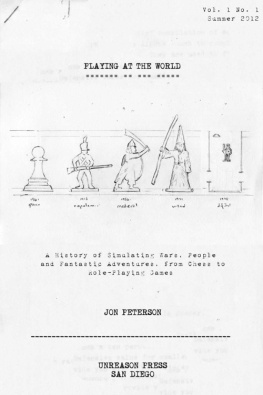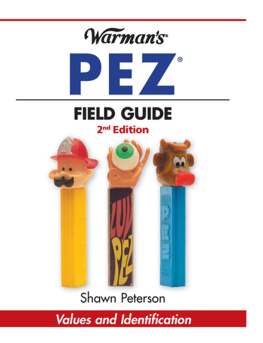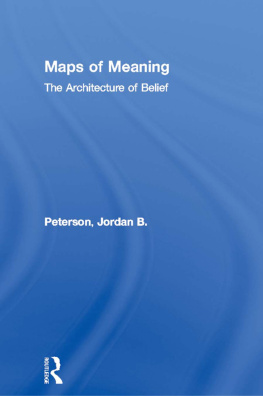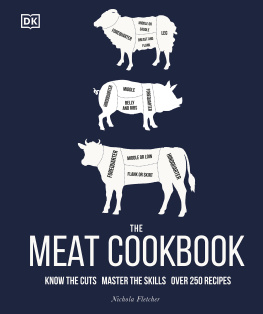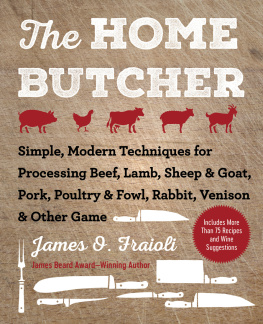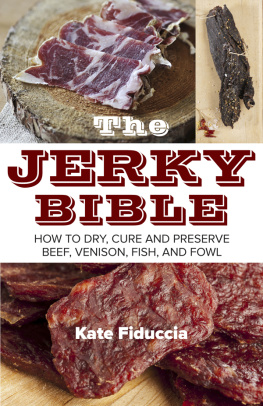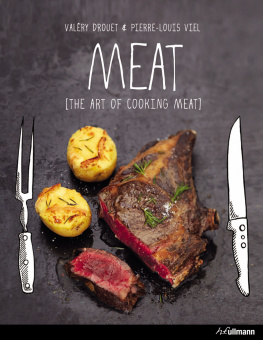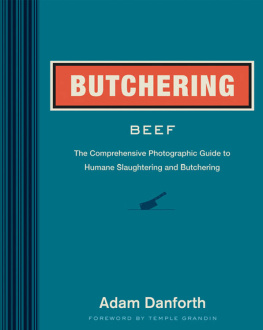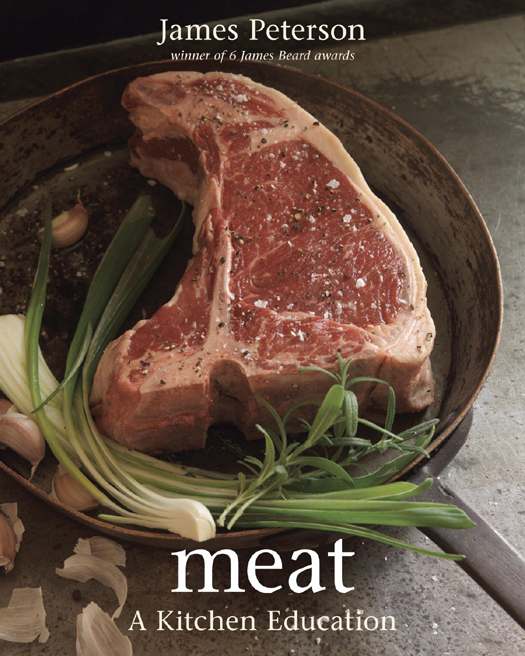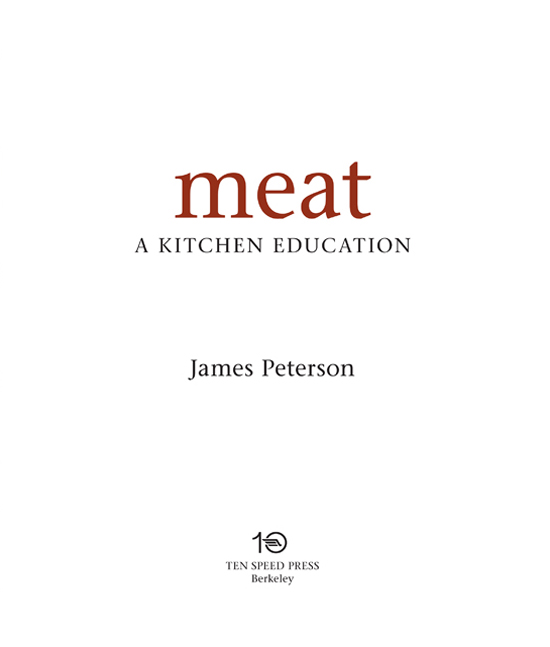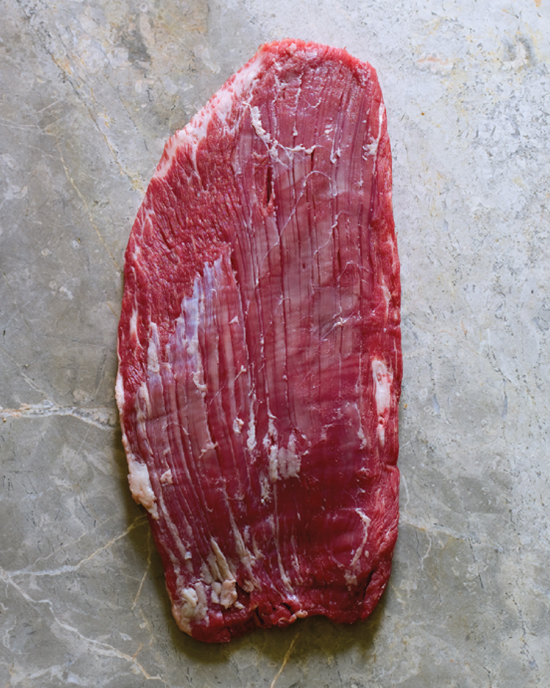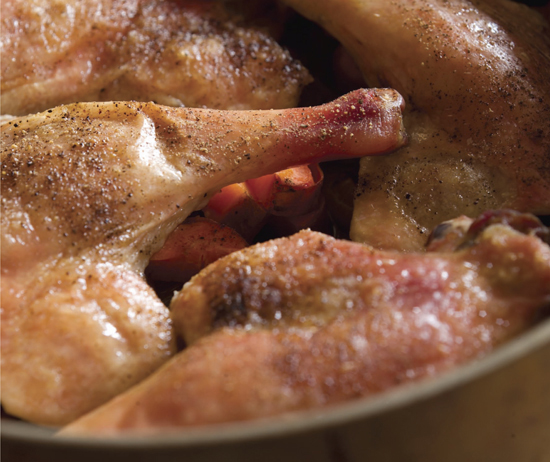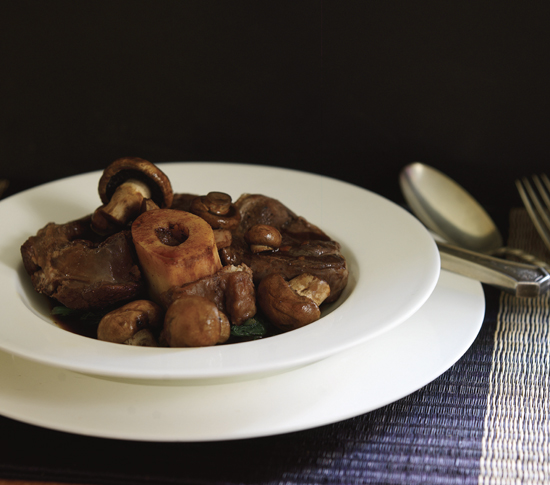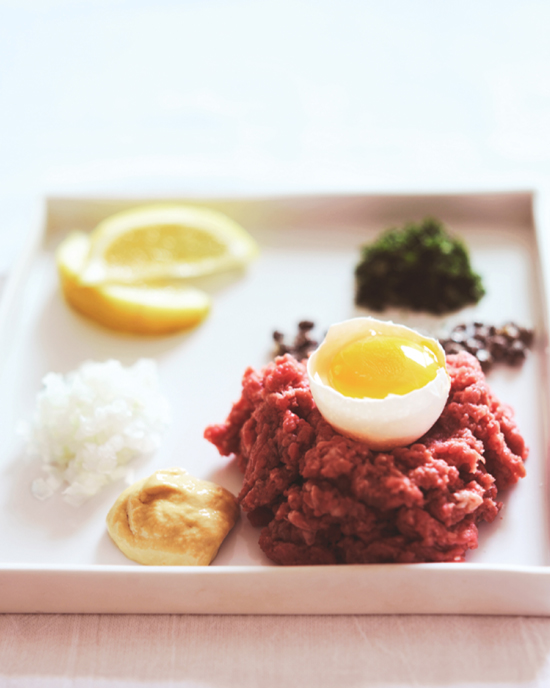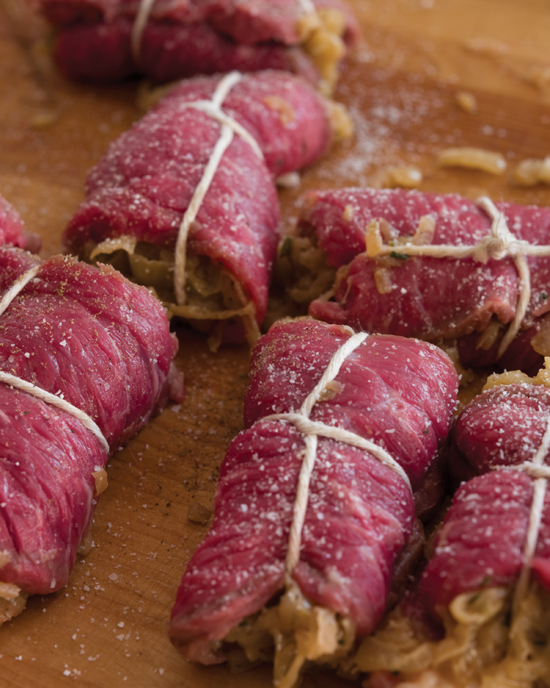Text and photographs copyright 2010 by James Peterson
All rights reserved.
Published in the United States by Ten Speed Press, an imprint of the Crown Publishing Group, a division of Random House, Inc., New York.
www.crownpublishing.com
www.tenspeed.com
Ten Speed Press and the Ten Speed Press colophon are registered trademarks of Random House, Inc.
Library of Congress Cataloging-in-Publication Data
Peterson, James.
Meat : a kitchen education / James Peterson. 1st ed.
p. cm.
Includes index.
1. Cookery (Meat) 2. Meat cuts. I. Title.
TX749.P485 2010
641.66dc22
2010021759
eISBN: 978-1-60774-453-5
Illustrations by Alex Kaluzshner
v3.1
CONTENTS
ACKNOWLEDGMENTS
On such a complicated project, there are innumerable people who contribute in large and small ways. Alice Piacenza was the person with whom I worked most closely. She tested recipes, was the hands in the shots, and, most importantly, helped me with the photography. Her assistance was invaluable.
Id like to thank Joshua Applestone of Fleischers Meats for generously taking most of a day to show us butchering techniques and for encouraging the appreciation of locally raised animals. Rudi Weids butchery classes at the Institute of Culinary Education were also extremely helpful. Rudi guided us through the process of breaking down a whole lamb and with fine-tuning the meat charts. Thank you, too, to my dear friend Dennis Malachosky for explaining and demonstrating to me the many complexities of butchering and cooking venison. Much appreciation goes to the gentlemen at Los Paisanos Meat Market for their help, guidance, and courtesy.
Id also like to thank those at Ten Speed, including my editors Aaron Wehner and Dawn Yanagihara, who worked day in and day out readying the manuscript for publication. Sharon Silvas copyediting was extremely thorough and contributed enormously to the finished text. Nancy Austins art direction and Katy Browns expertise were essential for the books clean design that disguises its production complexity. Thanks to illustrator Alex Kalushner for his charming animal renderings.
Finally, there are those in my personal life who keep me going, who encourage and cajole, and without whom I could not have brought this project to fruition. Elise and Arnold Goodman have been my agents now for 20 yearsthey have provided advice and have helped me weather the many ups and down of this industry. Sarah Leuze and Joel Hoffman have been steady reminders that I can do what I need to do and have helped me realize so many of my personal goals. Last, Id like to thank Zelik Mintz for standing behind me for so many years, for spurring me on, and for providing endless encouragement.
INTRODUCTION
Almost thirty years ago, when I owned a restaurant, I was confronted with a strange offer from a regular client. He worked at a laboratory where rabbits were raised for scientific experiments. The trials always included a control group made up of animals to which nothing was done, yet when these rabbits got old, they were discarded. He asked me if I would like some of these control-group subjects. I was grateful to get my hands on older rabbitstheyre perfect for thorough larding and slow braisingso I said yes. I was also eager to save them from a meaningless death.
The following Monday, a large cardboard box arrived. As I lifted the box, I knew from its motion that the rabbits were alive. Given the weight of the box, I expected to encounter about a dozen, so I was shocked to find only two giant rabbits that reminded me of a Monty Python skit. The task was left to me to do them in, which I did with a quick snap of the neck and a slit of the throat. On one hand, the killing wasnt as bad as I had anticipated. But the whole process upset me, especially the sad resignation the rabbits displayed as they seemed to know they were about to die. Never again have I looked at meat in the same way. The experience drove home the fact that an animal has to give its life in order for us to eat meat. I was left convinced that people who consume meat should have to kill for their supper at least once in their lives.
The average American eats more than eight ounces of meat a day, far more than needed for healthy nutrition. Asians eat small amounts of meat with hefty portions of carbohydrates, such as rice or noodles, and have lower rates of heart disease and stroke than Americans. It may seem perplexing to read in a book about meat that we should eat less of it, but this is, indeed, my position. We should eat less and eat better. In France, a good chicken costs twenty dollars or more. But what a chicken it is. Organic and truly free range, it is slaughtered at an older age than American chickens and as a result has a lot more flavor, if a bit more texture. Grass-fed steers in Italy and France develop a better flavor than some of the grass-fed beef in America, again, in part, because they are butchered at an older age. Beef in Japan is a rare luxury, but genuine Kobe beef is considered among the best in the world.
Americans are also enthusiastic consumers of steaks and chops. In other words, we eat high on the hogliterally. Most, though not all, of the tender meat on an animal is found along the back. Meat from the leg and shoulder, despite being the most flavorful, is often neglected. In Meat, I have included recipes and techniques that allow the reader to explore some of these underexploited cuts, with braising often taking center stage as the best method for cooking them. Offal, known euphemistically in the United States as variety meats, is also overlooked. How many Americans know the joys of properly cooked kidneys or sweetbreads or even a slice of liver? To the uninitiated, these typically inexpensive cuts are often a delicious revelation.
I have divided the chapters in Meat according to the type of animal, with the recipes in each chapter organized by either cooking technique alone or by cut and its appropriate cooking techniques. The emphasis on techniques, all of which are described in , is important because once you learn how to make one recipe, you can apply the same technique to a wide range of possibilities. Many of the recipes are extremely simple, sometimes involving only grilling or sauting without a sauce or garnish. But what may seem overly simplistic is actually how most of us cook and eat.
Youll find that each chapter is rich in photographs, most of them devoted to either cutting meat into pieces suitable for cooking or to techniques such as larding. These tasks may seem the work of a butcher rather than a cook, but butchers are disappearing, and many of those who remain are reluctant to carry out some of the more labor-intensive techniques. Plus, by doing the work yourself, youll gain both valuable practice with a knife and beneficial insight into how animals are put together. Youll also save money by buying large cuts and breaking them down into steaks or chops or into pieces suitable for braising. You may even discover that you enjoy cutting up meat, finding it to be surprisingly soothing once you get the knack of it.





